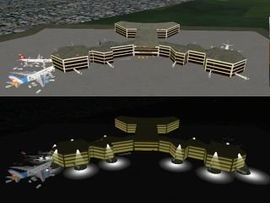Ninoy Aquino International Airport
| This article is a stub. You can help the wiki by expanding it. |
 RPLL Terminal 1 | |||||||||||||
| |||||||||||||
| Type | public | ||||||||||||
|---|---|---|---|---|---|---|---|---|---|---|---|---|---|
| Owner | tbn | ||||||||||||
| City | Manila, Philippines | ||||||||||||
| website | |||||||||||||
| |||||||||||||
Ninoy Aquino International Airport, (Filipino: Paliparang Pandaigdig ng Ninoy Aquino) or NAIA (pronounced /ˈnaɪ.ə/), (IATA: MNL, ICAO: RPLL) is a public airport located in Philippine's capitol city of Manila between the districts of Pasay and Paranaque, Philippines. NAIA serves the international and national air traffic for the country on the island of Luzon.
The airport is named for Benigno "Ninoy" Aquino, Jr., who was assassinated at the airport in 1983.
Following the Philippine's Independency in 1948, NAIA moved to it's actual location. Because a fire damaged Terminal 1 in 1972, it was rebuild completely, with a capacity of 4.5 million passengers per year. NAIA-1 has 18air bridges and serves 27 airlines. Terminal 2 (nicknamed "Centennial Terminal") completed in 1998 adding the capacity of another 2.5 million passengers for international flights plus 5 million passengers for domestic arrivals and departures. NAIA-2 is exclusively used by Philippines Airlines (PAL) with it's 12 air bridges distributed over the north- and south wing to separate domestic from international arrivals and departures. Terminal 3 followed in 2008 adding the capacity of approximately 13 million passengers per year. NAIA-3 has 16 air bridges and serves Cebu Pacific Airlines (CEB), "Air Philippines" and PAL's budget brand "PAL Express" for domestic and international flights.